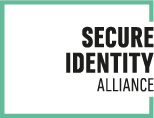Identity Assurance


Dear Colleague,
As we move rapidly towards the Connect: ID Conference in Washington next week, the events of 2014 continue to have a significant impact on the future of digital identity across the globe.
One of the most significant developments of last year was undoubtedly the European Commission’s Electronic and Trust Services (eIDAS) regulation that came into force on 17th of September 2014.
[Announcing the first “eIDAS deployment" workshop on 8th & 9th June 2015 at the Queen Elizabeth Centre in London during the SDW Conference - Registration is opened at www.secureidentityalliance.org ]
Essentially a replacement for the fifteen year old e-Signature directive, eIDAS is designed to accelerate and secure cross-border, online transactions through electronic identification and trust services.
eIDAS is important for a number of reasons: in building a trust framework between European member states; in fostering greater systems interoperability; in allowing citizens to access various public and private services as they move between member states.
But perhaps eIDAS’ greatest value is its ability to bring government–derived digital identities into the mainstream.
For the secure identity industry, any move to formalize and extend the use of digital identities is to be applauded. Yet with the Regulation defining three levels of assurance, it remains critical that eIDAS is not used as a justification to drive down security at a time when e-ID systems around the world need it most.
We cover this issue in more depth in an article here.
e-ID assurance discussions aren’t just happening in Europe. Across the Atlantic, the United States’ National Institute of Standards and Technology is consulting with industry as to whether the 2013 revision of Special Publication 800-6 on authentication guidance is fit for purpose.
With e-ID an element of the proposed Transatlantic Trade and Investment Partnership, it seems the assurance issue is one that will continue for some time to come. It’s certainly something that the SIA, governments and industry will be discussing in more depth when we meet at Connect:ID in Washington from 23rd March.
Looking at our own activities in 2014, the SIA made significant progress within its workgroup programme; publishing a series of positions and market-defining reports throughout 2014, as well as launching a tool, the eSAM, for assessing eDocuments issuance programs security awareness.
We notably delivered a detailed analysis of the global eServices market to 2020 in partnership with Boston Consulting Group (BCG), and produced a comprehensive report with the GSM Association (GSMa) tackling the growing issues and importance of mobile identity.
As we move into the second quarter of 2015, the SIA will continue its work to nurture a fully interoperable, secure digital identity environment – working with governments and technologists to identity the opportunities and address the issues.
To find out more about our work, or for membership information, go to www.secureidentityalliance.org
Yours sincerely,
Frédéric Trojani,
Secure Identity Alliance Chairman

